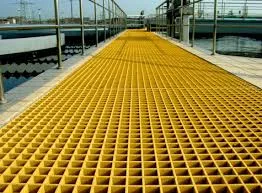
-
 Afrikaans
Afrikaans -
 Albanian
Albanian -
 Amharic
Amharic -
 Arabic
Arabic -
 Armenian
Armenian -
 Azerbaijani
Azerbaijani -
 Basque
Basque -
 Belarusian
Belarusian -
 Bengali
Bengali -
 Bosnian
Bosnian -
 Bulgarian
Bulgarian -
 Catalan
Catalan -
 Cebuano
Cebuano -
 China
China -
 China (Taiwan)
China (Taiwan) -
 Corsican
Corsican -
 Croatian
Croatian -
 Czech
Czech -
 Danish
Danish -
 Dutch
Dutch -
 English
English -
 Esperanto
Esperanto -
 Estonian
Estonian -
 Finnish
Finnish -
 French
French -
 Frisian
Frisian -
 Galician
Galician -
 Georgian
Georgian -
 German
German -
 Greek
Greek -
 Gujarati
Gujarati -
 Haitian Creole
Haitian Creole -
 hausa
hausa -
 hawaiian
hawaiian -
 Hebrew
Hebrew -
 Hindi
Hindi -
 Miao
Miao -
 Hungarian
Hungarian -
 Icelandic
Icelandic -
 igbo
igbo -
 Indonesian
Indonesian -
 irish
irish -
 Italian
Italian -
 Japanese
Japanese -
 Javanese
Javanese -
 Kannada
Kannada -
 kazakh
kazakh -
 Khmer
Khmer -
 Rwandese
Rwandese -
 Korean
Korean -
 Kurdish
Kurdish -
 Kyrgyz
Kyrgyz -
 Lao
Lao -
 Latin
Latin -
 Latvian
Latvian -
 Lithuanian
Lithuanian -
 Luxembourgish
Luxembourgish -
 Macedonian
Macedonian -
 Malgashi
Malgashi -
 Malay
Malay -
 Malayalam
Malayalam -
 Maltese
Maltese -
 Maori
Maori -
 Marathi
Marathi -
 Mongolian
Mongolian -
 Myanmar
Myanmar -
 Nepali
Nepali -
 Norwegian
Norwegian -
 Norwegian
Norwegian -
 Occitan
Occitan -
 Pashto
Pashto -
 Persian
Persian -
 Polish
Polish -
 Portuguese
Portuguese -
 Punjabi
Punjabi -
 Romanian
Romanian -
 Russian
Russian -
 Samoan
Samoan -
 Scottish Gaelic
Scottish Gaelic -
 Serbian
Serbian -
 Sesotho
Sesotho -
 Shona
Shona -
 Sindhi
Sindhi -
 Sinhala
Sinhala -
 Slovak
Slovak -
 Slovenian
Slovenian -
 Somali
Somali -
 Spanish
Spanish -
 Sundanese
Sundanese -
 Swahili
Swahili -
 Swedish
Swedish -
 Tagalog
Tagalog -
 Tajik
Tajik -
 Tamil
Tamil -
 Tatar
Tatar -
 Telugu
Telugu -
 Thai
Thai -
 Turkish
Turkish -
 Turkmen
Turkmen -
 Ukrainian
Ukrainian -
 Urdu
Urdu -
 Uighur
Uighur -
 Uzbek
Uzbek -
 Vietnamese
Vietnamese -
 Welsh
Welsh -
 Bantu
Bantu -
 Yiddish
Yiddish -
 Yoruba
Yoruba -
 Zulu
Zulu
frp pipe
Understanding FRP Pipes A Comprehensive Overview
Fiber Reinforced Polymer (FRP) pipes are increasingly becoming a popular choice in various industries, thanks to their unique properties and versatility. In this article, we'll delve into what FRP pipes are, their advantages over traditional materials, applications, and future prospects.
What Are FRP Pipes?
FRP pipes are composite materials made from a polymer matrix reinforced with fibers, typically glass, carbon, or aramid. The combination of the polymer and reinforcement fibers endows these pipes with a host of desirable characteristics, making them suitable for a range of applications in harsh environments.
Advantages of FRP Pipes
1. Corrosion Resistance One of the hallmark features of FRP pipes is their resistance to corrosion. Unlike traditional piping materials such as steel or iron, FRP pipes do not rust and are impervious to many chemical agents. This makes them ideal for industries such as chemical processing, wastewater treatment, and oil and gas, where pipes are frequently exposed to corrosive substances.
2. Lightweight FRP pipes are significantly lighter than their metal counterparts, making transportation and installation easier and more cost-effective. This lightweight nature also reduces the strain on support structures, allowing for more flexible design possibilities in piping systems.
3. High Strength-to-Weight Ratio Despite their lightweight nature, FRP pipes possess a high strength-to-weight ratio. This means they can withstand considerable pressure and tensile forces, making them suitable for high-stress applications, such as in the construction of bridges and buildings, as well as in the transportation of high-pressure fluids.
4. Thermal Insulation FRP materials have excellent thermal insulation properties, which can reduce energy costs in temperature-sensitive applications. For instance, in industries requiring temperature control, such as food processing or pharmaceuticals, FRP pipes can help maintain the desired temperature without external insulation.
frp pipe

5. Longevity The durability of FRP pipes leads to longer service life and reduced maintenance costs. Traditional pipes often require frequent replacements due to rust or other forms of degradation, while FRP pipes can last for decades under proper conditions.
Applications of FRP Pipes
FRP pipes find extensive applications across various sectors
- Chemical Industry Their corrosion resistance allows for safe transportation of aggressive chemicals and effluents. - Water and Wastewater Treatment FRP pipes are used for both potable water systems and wastewater treatment plants due to their non-corrosive nature. - Oil and Gas In extraction and transportation, FRP pipes offer durability and resistance to harsh environments, including high pressures and corrosive materials. - Construction They are often used in construction projects where lightweight and strong materials are required, such as in precast products. - Renewable Energy In wind turbine applications, FRP materials are utilized for blades and structural components, showcasing their versatility beyond just piping.
Future Prospects
As industries become more environmentally conscious, the demand for sustainable materials is rising. FRP pipes are favored for their reduced environmental impact during production and their longevity. Additionally, ongoing advancements in fiber reinforcement technologies and polymer formulations are likely to enhance the performance and applications of FRP pipes further.
Moreover, as more companies begin to recognize the benefits of these innovative materials, we can expect to see increased investments in FRP technologies, leading to greater adoption and application in sectors that have traditionally relied on metal and traditional materials.
Conclusion
In summary, FRP pipes represent a remarkable advancement in materials technology, offering numerous benefits such as corrosion resistance, lightweight, and longevity. Their versatility makes them suitable across a wide range of industries, from chemical processing to renewable energy. As we move forward, the adoption of FRP pipes is poised to grow, driven by the demand for more efficient, durable, and environmentally friendly solutions in industrial applications.









